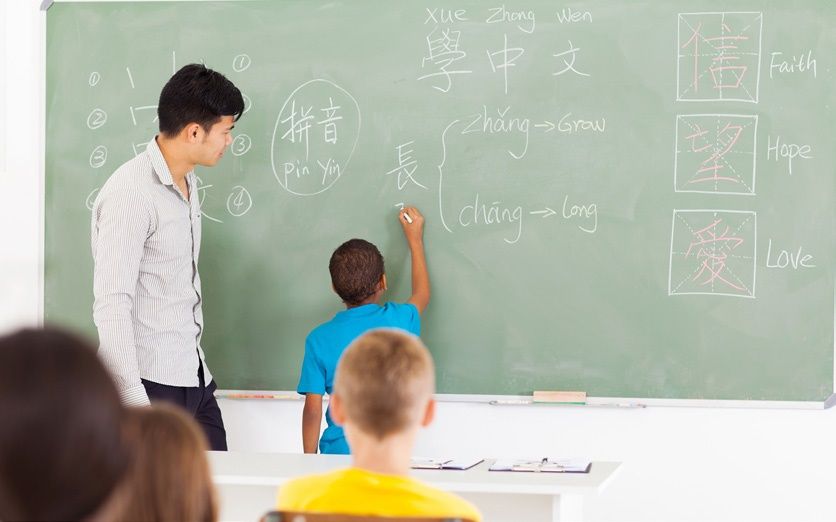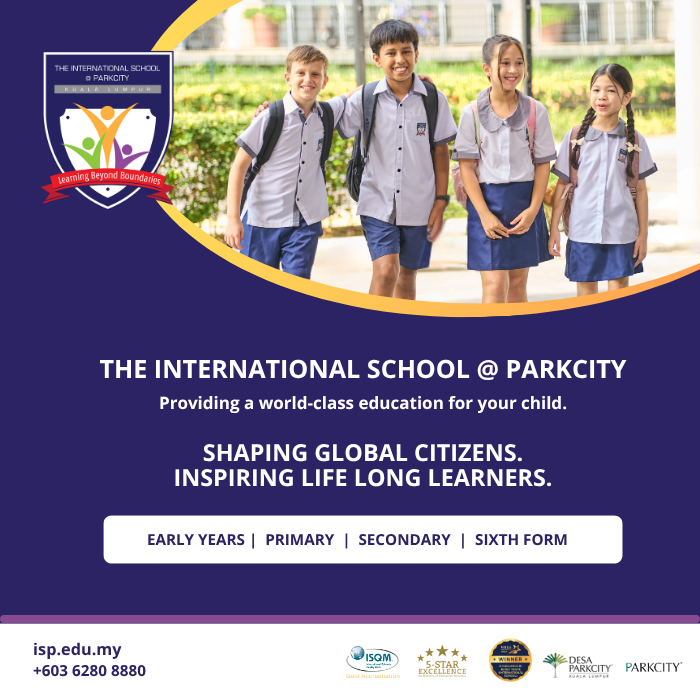Laletha Saba, Southeast Asia Field Researcher at ISC Research, provides an update on the demand for international schools in Malaysia and the region.
The international schools market in Malaysia continues to expand, giving expatriate and local families more education options than ever before. ISC Research data from January 2020 identifies 287 international schools in Malaysia teaching a total of 107,100 children in the language of English (English-medium) or bilingual, where English is one of the main languages of learning. The number of international schools has grown by 43% in just six years, when Malaysia had 96 schools. New international school development has mostly occurred in the Klang Valley region and Putrajaya, and enrolment demand has been particularly notable for the mid-priced schools.

Demand by Local and Expatriate Families
An increasing number of Malaysian families are choosing to enrol their children in their local international school, most enrolling them from Early Years on, and some joining for secondary education. There are a number of reasons for this increase.
Dissatisfaction with the country’s public schools is one reason. Other common reasons are the chance for children to learn in the language of English, to learn alongside children from other countries, to be taught by expatriate teachers with international skills and knowledge. In addition, they are able to follow respected international curricula, or to work towards examinations that prepare them well for higher education options overseas and, ultimately, global career potential.
There are no longer any limits to the number of Malaysian students an international school is permitted to enrol. The enrolment cap on local students was lifted in 2012 and by 2013, Malaysian students represented the largest proportion of the student body at international schools in the country, with demand from local families continuing to grow. According to analysis conducted in December 2019 by ISC Research for its Market Intelligence Report of International Schools in Malaysia, 45% of children at the premium international schools in the country (those schools charging the highest school fees) are Malaysian, with other major nationalities including British, South Korean, Chinese, American, Australian and Indian expatriates. In Malaysia’s international schools considered mid-market for their school fees, Malaysian children make up 65% of the total enrolment with other popular nationalities including South Korean, Indian and Chinese children.
Why International School Fees Vary
International schools differ quite distinctly in the nationalities of their teaching staff too. The most predominant nationality of teachers at Malaysia’s premium international schools (i.e. those schools that tend to be the most prominent and that charge the highest school fees) is British (42.6%). 3.9% of the teachers are from North America and 9% are from Australia or New Zealand. Malaysians make up 24.1% of the teachers working in the premium international schools. In the mid-priced schools, over half of all teachers are Malaysian teachers (54.7%) with 26% UK teachers and the rest coming from a range of other countries.
Expatriate teachers tend to bring extensive experience of international curricula and approaches to teaching and learning and, as a result, require higher salaries than many local teachers. This is one of the main reasons for the disparity in fees, along with facilities. However, local teachers bring a cultural understanding that is essential for the entire school. Schools that achieve strong collaboration between all staff provide a very healthy intercultural learning environment for their entire school community.
Some international schools in Malaysia are setting standards for local teacher training and mentoring programmes, where local teachers work alongside expatriate teachers to develop their skills and knowledge of the requirements and delivery of the international curriculum. For parents selecting an international school, the blend of teaching nationalities and the structure of the staff are questions to raise during a school visit.

Curriculum and Other Options
The orientation of an international school plays a very important factor in many parent’s decisions. Expatriates who are moving with their families from country to country will seek out a school that most closely reflects the curriculum and teaching and learning approach that their child has been used to. For others, they may select an education approach that they are most familiar with based on their own educational experience. For others, it’s the education they most respect which, for many Malaysians and expatriates, is a British curriculum. The most popular foreign curriculum delivered at Malaysia’s international schools is the Cambridge Secondary curriculum or the National Curriculum of England although the International Baccalaureate, the American, Australian and Singaporean curricula are also available. The most popular exit examinations for students at age 18 are A Levels and the IB Diploma.
International schools in Malaysia are differentiating themselves in other ways too. Most of the country’s international schools (16%) offer second language learning. For some this is Malay, but others offer Mandarin, French, Korean or Spanish. Some schools have specialised EAL (English as an Additional Language) provision, some have introduced
flexible learning spaces, and Malaysia has several international schools that are Apple Distinguished Schools; designated by the Apple brand as being innovative centres of educational excellence for technology including The International School @ ParkCity and Garden International School.
Malaysia is also gaining a reputation as a popular country for British independent schools. Marlborough College, Epsom College and King Henry VIII College are already open, and Stonyhurst College will be opening a sister school in Penang in August of this year (2020). Most of these schools provide some boarding facilities as does IGB International School in Selangor and Kolej Tuanku Ja’afar in Mantin.

International Schools within Southeast Asia
Looking beyond Malaysia to the wider Southeast Asia region, ISC Research data from January 2020 positions it as one of the leading sub-regions in the world for international education. It now has 1,516 English-medium international schools, making it the third largest sub-region in the world for school choice behind Western Asia (the Middle East) and Eastern Asia. It is the fourth largest sub-region in the world for the number of students attending international schools with over half a million (557,000) currently enrolled. The leading cities within the sub-region are Bangkok, Singapore and Phnom Penh, each of which have well over 100 international schools.
In many countries within Southeast Asia, the local population seeking out international schooling, when financially accessible, is more than ever before; Thailand, Cambodia and Vietnam particularly so. There is a growing number of Asian expatriates selecting international schools, particularly South Korean, Japanese and Indian families. Chinese nationals are also seeking out school places in several countries within Southeast Asia, especially Singapore and Bangkok in order to move their children to a location that offers them more affordable and less restrictive international education than local Chinese families are able to access in China. There has also been a recent movement of families with international school needs from Hong Kong to Singapore and Thailand due to challenges within the country.
In addition, fewer Western expatriate families have access today to the traditional generous relocation packages that include the entire cost of school fees for dependants. Some expatriates are given a partial school fees package, but many others receive no school fee support at all. This means that many expatriate parents are having to fund their child’s education themselves and as a result, have to be cost-conscious. This is driving a demand by expatriates — as well as local families — for international schools throughout Southeast Asia with fees that are more manageable with a parent’s salary. As a result, a new sector of international schools has emerged in recent years which ISC Research considers as mid-priced schools.
Both local and expatriate parents selecting schools in Southeast Asia are becoming more discerning. There is a greater understanding of education options available to them, and parents are shopping around more than ever before. In many of the major cities, the number of international schools means that, even if demand is growing, schools have to be competitive regarding fees, and to ensure that standards are high. Schools more than ever are identifying unique ways to stay successful in a competitive and changing market and, as a result, parents who are considering a range of international schools will be faced with many different facilities and provisions. Those parents who take time to identify what is right for their children and their particular needs are likely to select a good school.
For more information about international schools in Malaysia, Southeast Asia and globally visit www.iscresearch.com.


































